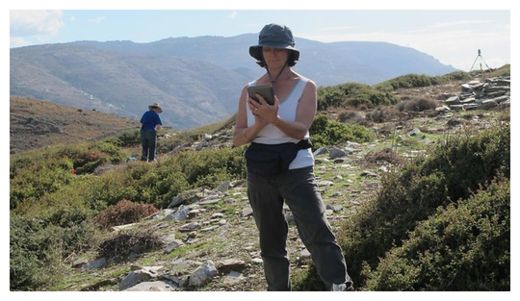
Australian archaeologists will try to solve the ancient mystery of why the city was abandoned and whether a lack of fresh water was the cause.
They're off to Zagora, a city that was thriving with farming and industry on the island of Andros in the 9th century BC before it was inexplicably abandoned.
That was about the time of Homer and before Sparta and the Athenian democracy.
Australia's first archaeological dig in Greece was at Zagora in the 1960s and 1970s and they managed to excavate about 10 per cent of the 6.5 hectare site but did not solve the riddle.
Now 50 Australians will begin working there again next week, hoping to finally explain why an entire population would leave a city at the heart of a major sea trading route. Some things haven't changed.
They'll have to hike in and out to the isolated site each day and use pack mules to carry heavy equipment. But some things are different.
Ground penetrating radar, satellite imaging analysis and multi-spectral treatment of those images might help, says one of the dig's co-directors, Lesley Beaumont from Sydney University's Department of Archaeology.
"What we are able to do now, which couldn't even have been dreamed of back then, is to use subsurface testing methods ... to look underneath the surface of the ground before even putting a spade into it," she told AAP.
They are curious about whether hydrology might have something to do with the abandonment of the settlement that had been growing at an extraordinary rate.
"One of the ideas we are investigating is whether there has been an earthquake because the ground rock is layers of schist and marble, and marble can be permeated by water but schist can't.
"If there was a shifting of the layers because of earthquake the water courses could have been altered and the site that was once able to have water may suddenly run dry."
With three years of funding they began last year with big picture analysis and geophysical survey with help from a geologist. This year includes satellite imagery work, aerial photography and a full excavation season from September 23 until November 4.
"We have found a lot of metal-working evidence on the site, lots of houses had huge storage capacities so they were clearly farming very widely and storing their goods for surplus against hard times or for trade," she said.
Another dig co-director, Margaret Miller, says Zagora is similar to Pompeii - a snapshot in time to a period we know close to nothing about.
"Archaeology so often only deals with royalty and the rich. Here we're learning about ordinary folk, people like us, and how they lived," Dr Miller said in a statement.
She said the site challenges stereotypes of what a city must be like.
There are no kitchens in houses, industry isn't confined to one area, a question-mark hangs over religion and the most important aspect of the settlement appears to be the fort wall.
The dig overlooking the Aegean is sponsored by the Australian Archaeological Institute in Athens (AAIA), the University of Sydney and the Australian Research Council. It is also partly funded by private donations.
Next year's dig will be directed by what they find this year.
Source: Australian Associated Press



Reader Comments
to our Newsletter